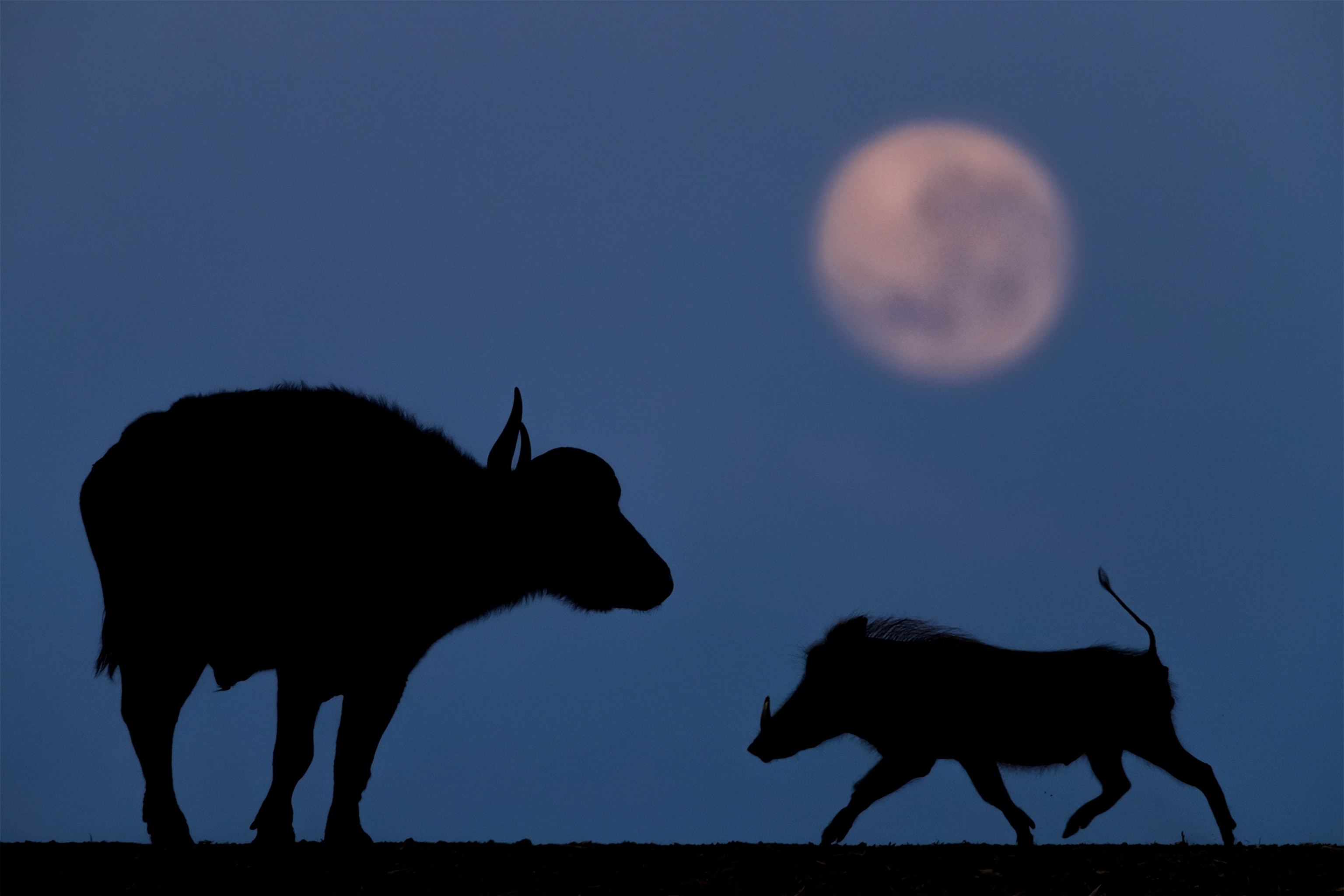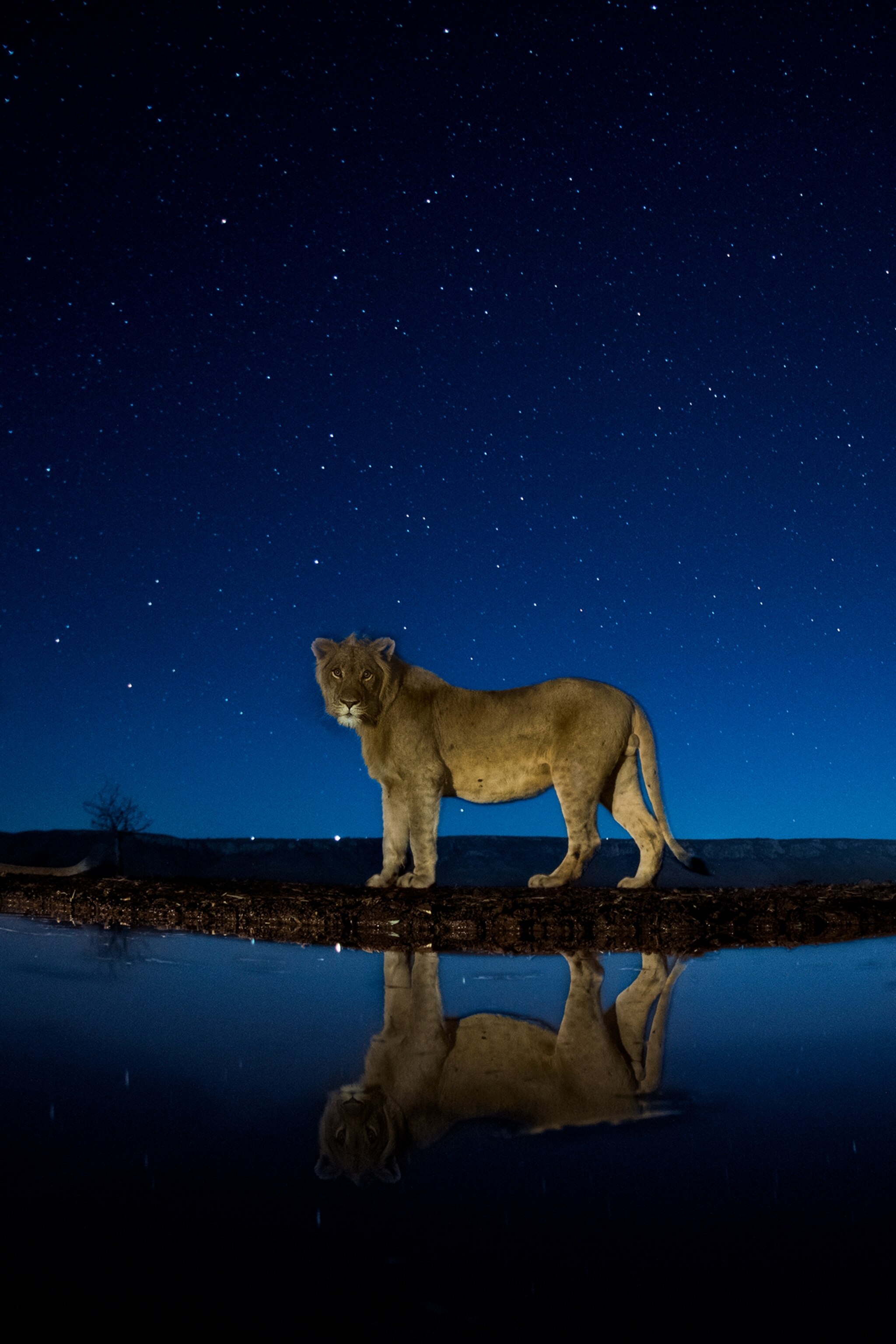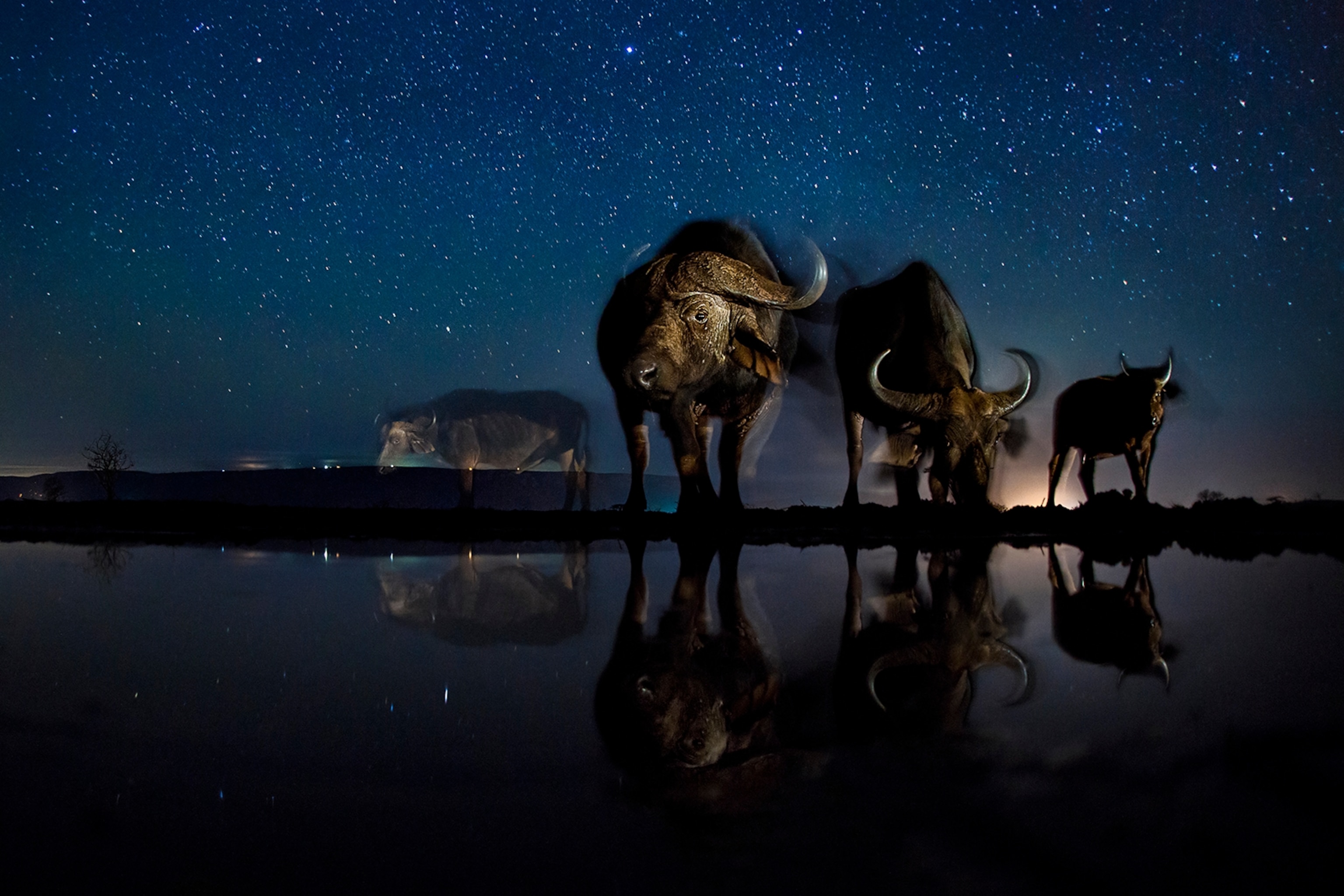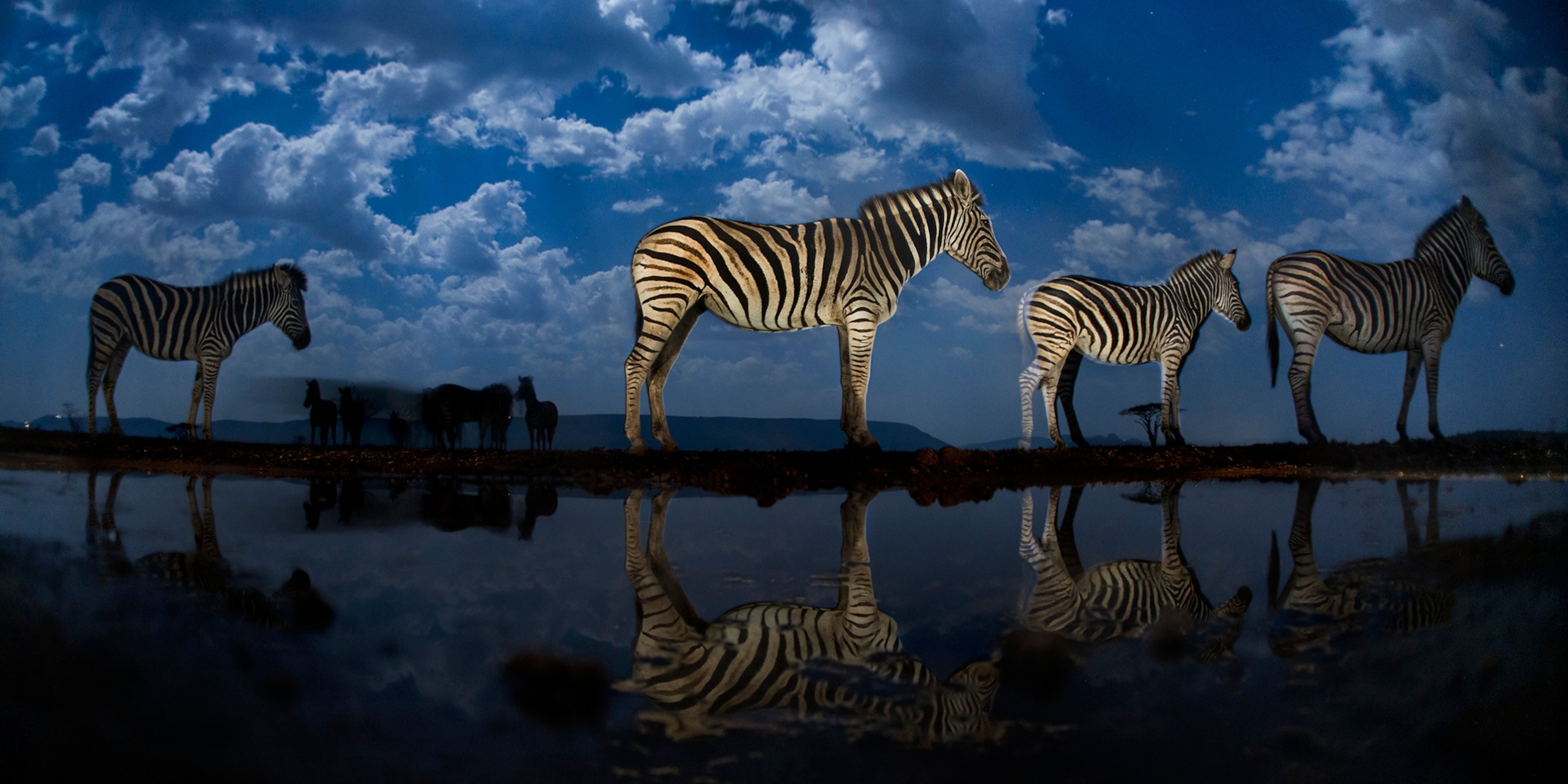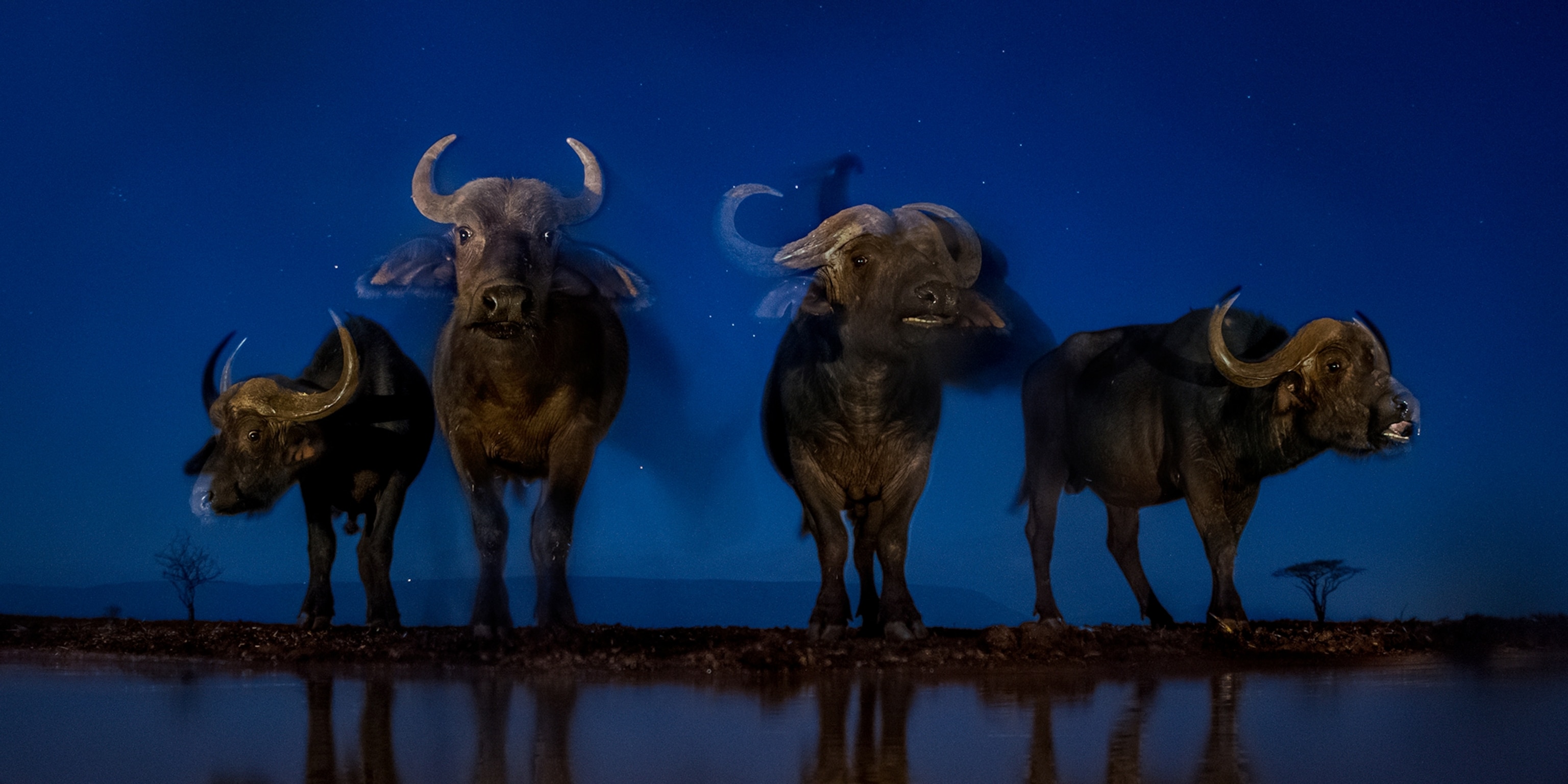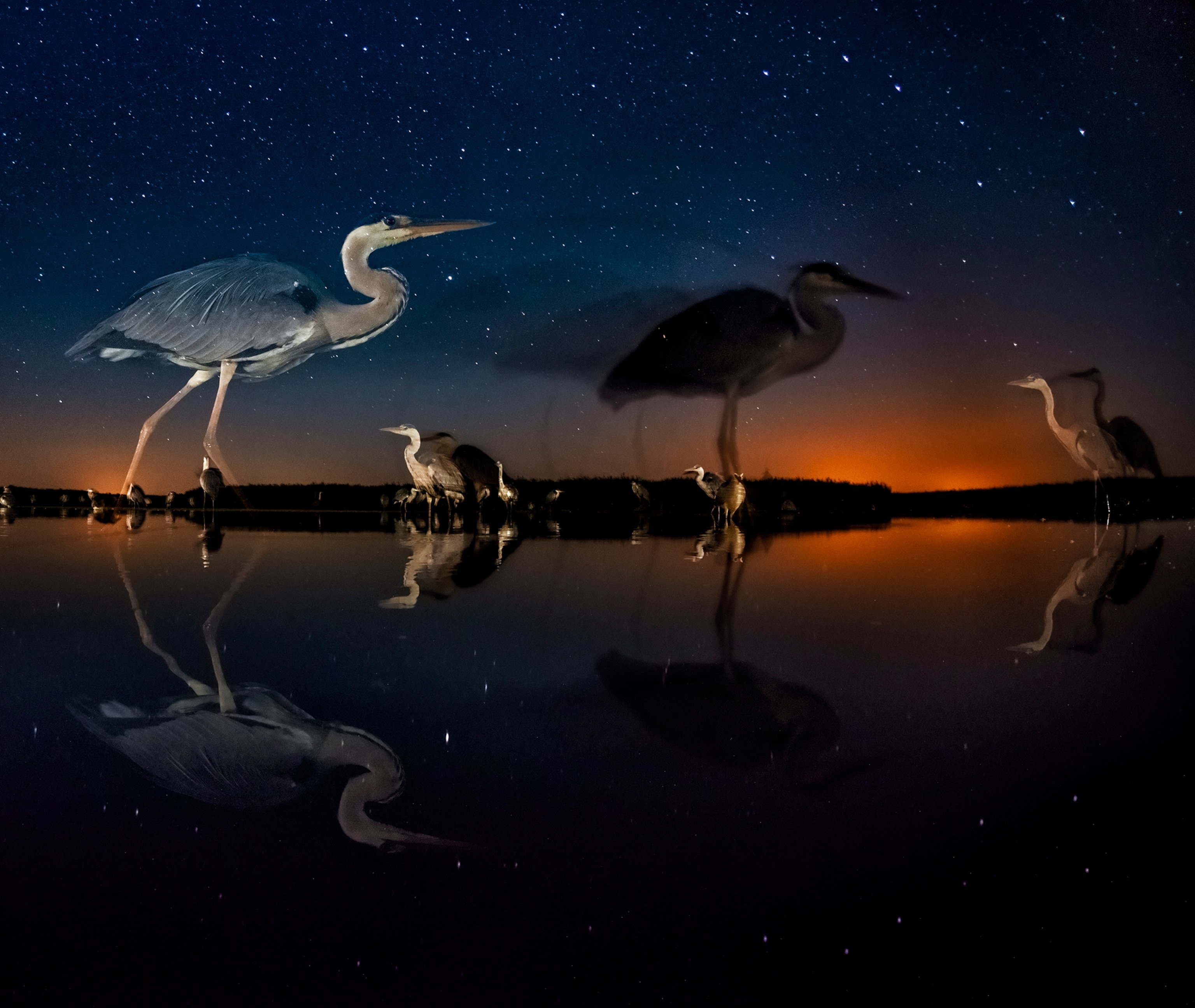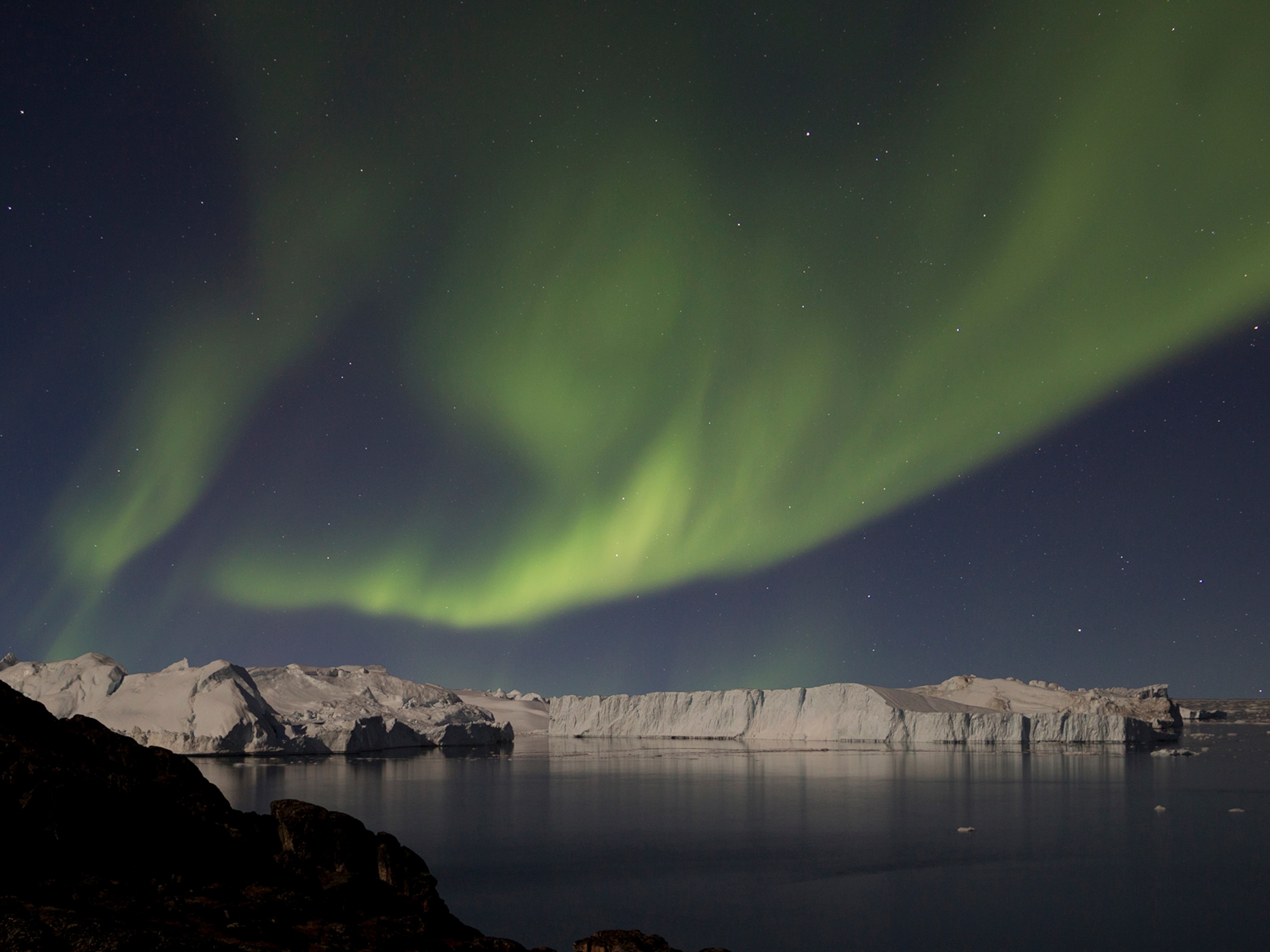8 Haunting Pictures of Wild Animals at Night
A hidden camera sees animals on the move at night in a way the human eye cannot.
At dawn, after three nights of trying to capture a decent photo of elephants at a South African watering hole last July, Hungarian wildlife photographer Bence Máté was devastated to find the pachyderms had fished the flash for his expensive remote camera system out of its hide box, and smashed it to smithereens.
Fearing the camera was next, he rebuilt the box, surrounded it by a bank of stones, and sprinkled chili powder liberally all around. The elephants didn’t touch his gear again.
Since 2009, Máté had been working out the kinks in his remote-operated photo system for taking nighttime pictures of animals. On a short trip to Zimanga Game Reserve in Kwazulu Natal, South Africa, in 2015, he bagged several good images of hippos and water buffalo. Encouraged by his success, he returned in 2016 for a 35-day trip.
Over that month, he shot 50,000 digital frames and ended up with only 10 pictures he felt were usable—that is, where the moon wasn’t too bright, or where the animals that did show up were positioned just right. He got lucky when a lion and the reserve’s largest male elephant visited the pond—once each.
Captured in long exposures to include natural light from stars, moon, dawn, and dusk, Máté’s images reveal restless prey and taut, watchful predators. The occasionally blurred motion, he says, evokes a sense of how the mind might be aware of movement at night, but not truly perceive it.
Máté hopes his photographs bring home the importance of protecting nature, and give people a deeper view into the behavior of animals that are seldom seen, even by the light of day.
Observing wild animals in close proximity, without binoculars, is extraordinary, says Máté. “Seeing them with your own eyes is a completely different feeling.”

